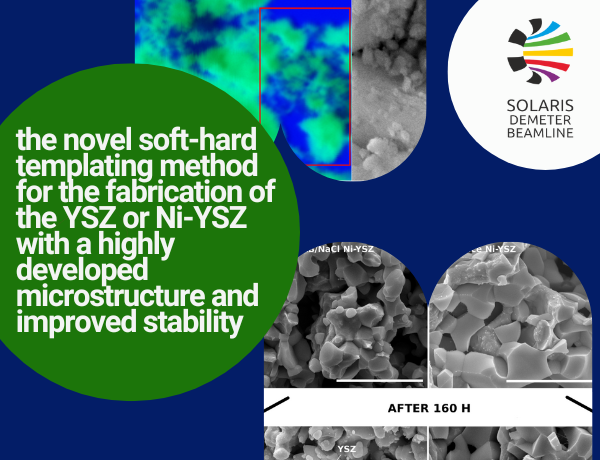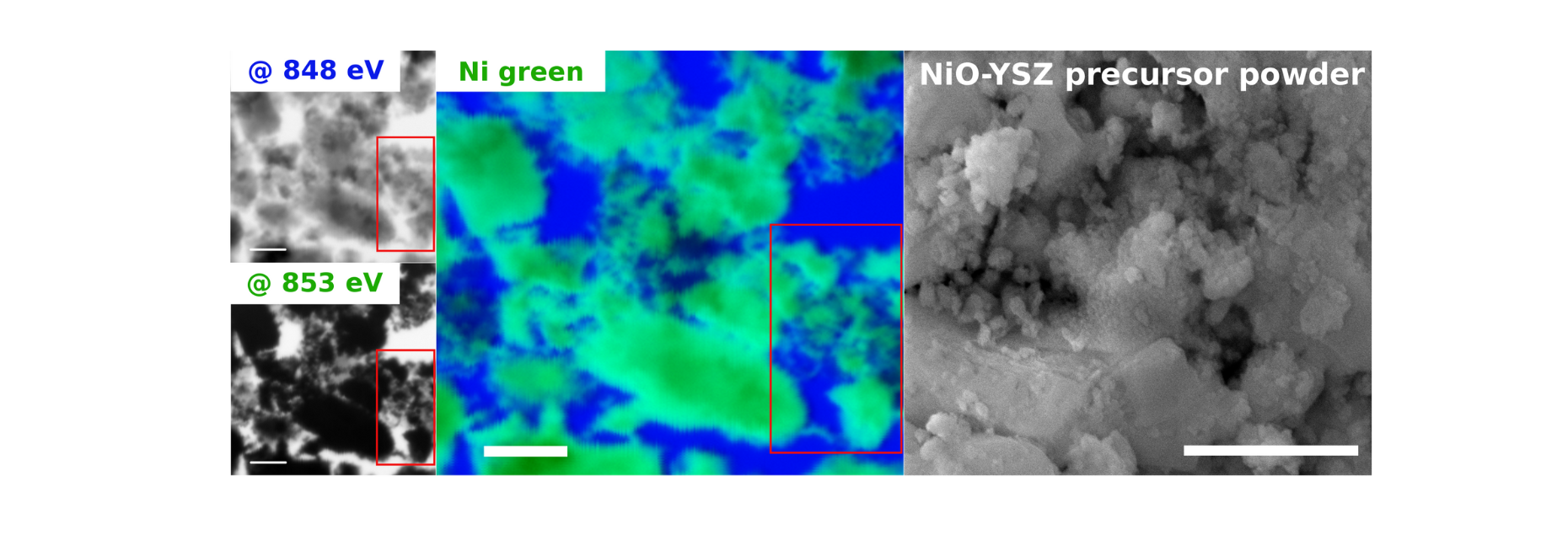
 Web Content Display
Web Content Display
SOLARIS centre
 Web Content Display
Web Content Display
 Web Content Display
Web Content Display
Fabrication of wormhole-like YSZ and Ni-YSZ by the novel soft-hard template CTAB/NaCl-assisted route.

A novel one-pot synthesis route leading to the formation of a wormhole-like structure was developed for the successful fabrication of porous YSZ and Ni-YSZ systems.
This method involved co-precipitation in the presence of CTAB/Pluronic P123 and crystallizing NaCl. The fabricated Ni-YSZ showed better long-term electrical stability in hydrogen than a traditional Ni-YSZ cermet. It resulted from the suppression of Ni structural changes throughout the anode scaffold. Therefore, the novel soft-hard templating method is recognized as a promising route for the fabrication of the YSZ or Ni-YSZ with a highly developed microstructure and improved stability.
It was proven via STXM imaging that after the precipitation, the gel was supported on a soft micelle-based template to be further structured via leftover NaCl formed during the drying step (hard template). The co-existence of those two templates with the fully amorphous and extremely nanometric precipitate of separated metal hydroxides resulted in obtaining a wormhole-like structure of either YSZ or NiO-YSZ, depending on the starting cation composition (Fig. 1.). Good separation of both composite’s subphases was evidenced despite the formation of the nanoprecipitates. It was evidenced that the concentration of 0.3 M cations in the starting solution gave the most homogeneous structure with the highest porosity of around 50% and 47% for 8YSZ and NiO-YSZ (reduced), respectively, even though no additional pore formers were added. The reduction studies proved that the novel way to prepare NiO-YSZ ensures a higher degree of integration of the NiO and YSZ grains and limits the growth of Ni grains during redox cycles. The long-run electrical conductivity test revealed that 0.3 M CTAB/NaCl NiO-YSZ is more stable within 160 h of testing than the corresponding reference material prepared using conventional methods. It was found that the restructured material is less prone to Ni agglomeration and migration across the anode, mostly due to the increased NiO-YSZ interfacial integration as well as uniform and finely dispersed Ni grains after reduction (Fig. 2).

Fig.1. STXM images of the 0.3 M CTAB/NaCl NiO-YSZ precursor powder measured at 848 eV (before the Ni edge), 853 eV (Ni edge), Ni elemental map and SEM image. Every scale bar is 1 µm.

Fig.2. SEM images and EDS elemental maps of the 0.3 M CTAB/NaCl Ni-YSZ (reduced) and conventional reference anodes before and after the aging tests. Scale bar is 8 µm each time.
The entire publication is available here:
